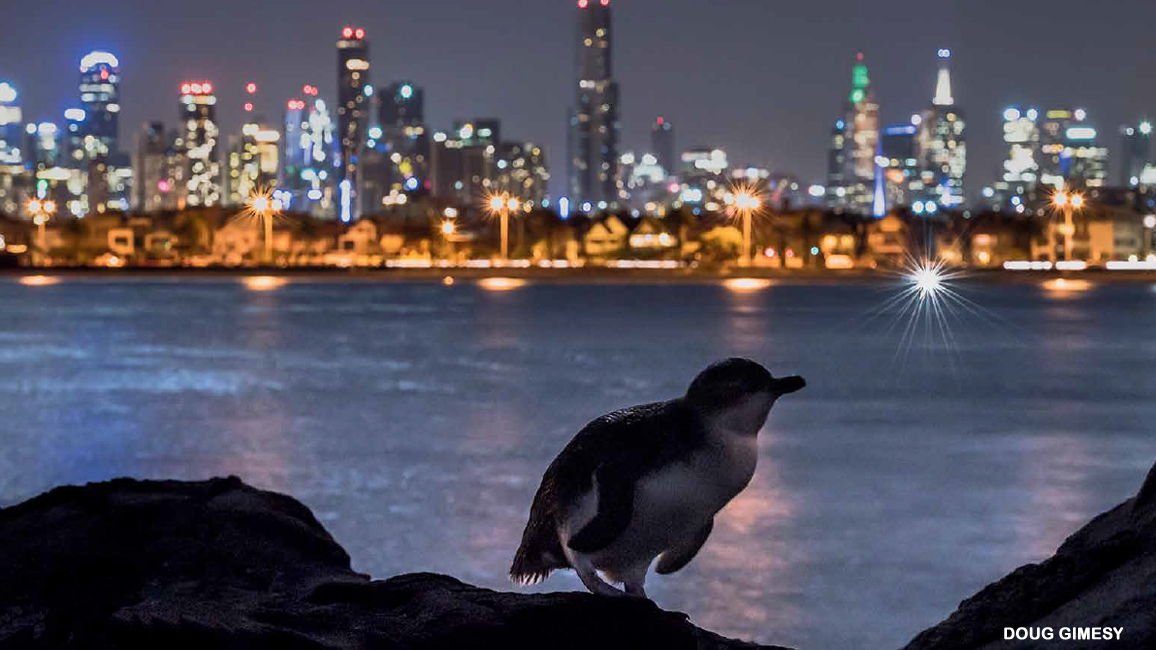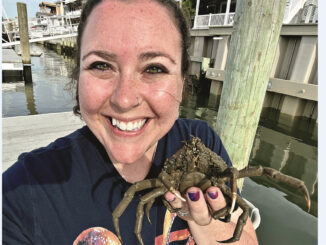
City Penguins
By Ellen Lambeth; Photos by Doug GimesyWhat is little and blue, has wings but doesn’t fly, and enjoys the nightlife? Believe it or not, it’s a penguin!
Maybe you know that all penguins live south of the equator. But you might not know that they don’t all live on polar snow and ice—as you can plainly see here. Little penguins live along the coasts of Australia and New Zealand (see map below). And some—including this one—live by Melbourne. That’s the big Australian city lit up at night here in the background. It’s no big surprise how the little penguin got its name. Shorter than a bowling pin, this is the smallest of all the world’s penguins.
It’s also the only penguin with blue feathers. So some people call it the blue penguin or little blue penguin. Some even call it the fairy penguin.
TINY TOWNIES
Little penguins normally spend most of the year out at sea, where they hunt food such as fish, squid, and jellyfish. They come ashore only when it’s time to nest and raise families. But without even realizing it, some people created a perfect year-round habitat for one group of little penguins.
Here’s how it happened: Back in 1956, the Olympic Games were held in Melbourne. The city surrounds a large bay called Port Phillip, where Olympic sailors competed in races. To make a safe harbor for their boats, the city piled up rocks to build a breakwater at the end of the St. Kilda pier. (St. Kilda is a bayside suburb of Melbourne.) Penguins were already visitors to the area around the pier. But some years after the breakwater was built, a few decided the spaces between the rocks made perfect nesting—and resting—places. Over time, their numbers eventually grew to about 1,400 birds. These days, the St. Kilda colony spends the entire year in the bay instead of heading back out to sea.
DODGING DANGERS
Even though penguins and people don’t usually mix, those here at St. Kilda have found a way to live together. The birds go about their business, and the people enjoy the “show.”
One of the most exciting things is to watch penguins “coming home” to the breakwater at the end of the day. Penguin-watchers can be trouble, though. They sometimes get too close to the birds and scare or temporarily blind them by taking flash photos. For now, St. Kilda’s penguins find plenty to eat in Port Phillip Bay. But a changing climate means more droughts (long dry periods) might be expected here. The fish that the penguins eat get some of their food from the river that runs into the bay. But less rain feeding the river would mean less food-rich water washing into the bay to feed those fish. And fewer fish could mean fewer penguins.
Litter and pollution also end up in the bay. Even trash from town can get blown or washed into storm drains and out into the bay. As plastic trash breaks down into small bits, fish eat it by mistake. Then it gets into the penguins when they eat the fish. Penguins may mistake floating plastic bags for jellyfish and gobble them up, too. They also can get caught up in the bags or in other plastic such as drifting fishing lines or netting.
Thankfully, a group called Earthcare St. Kilda is watching out for these birds. They send out volunteers to keep the area clean and the tourists under control. The volunteers also include scientists who study the penguins and help make sure they remain safe and healthy. Good luck, little penguins!



















